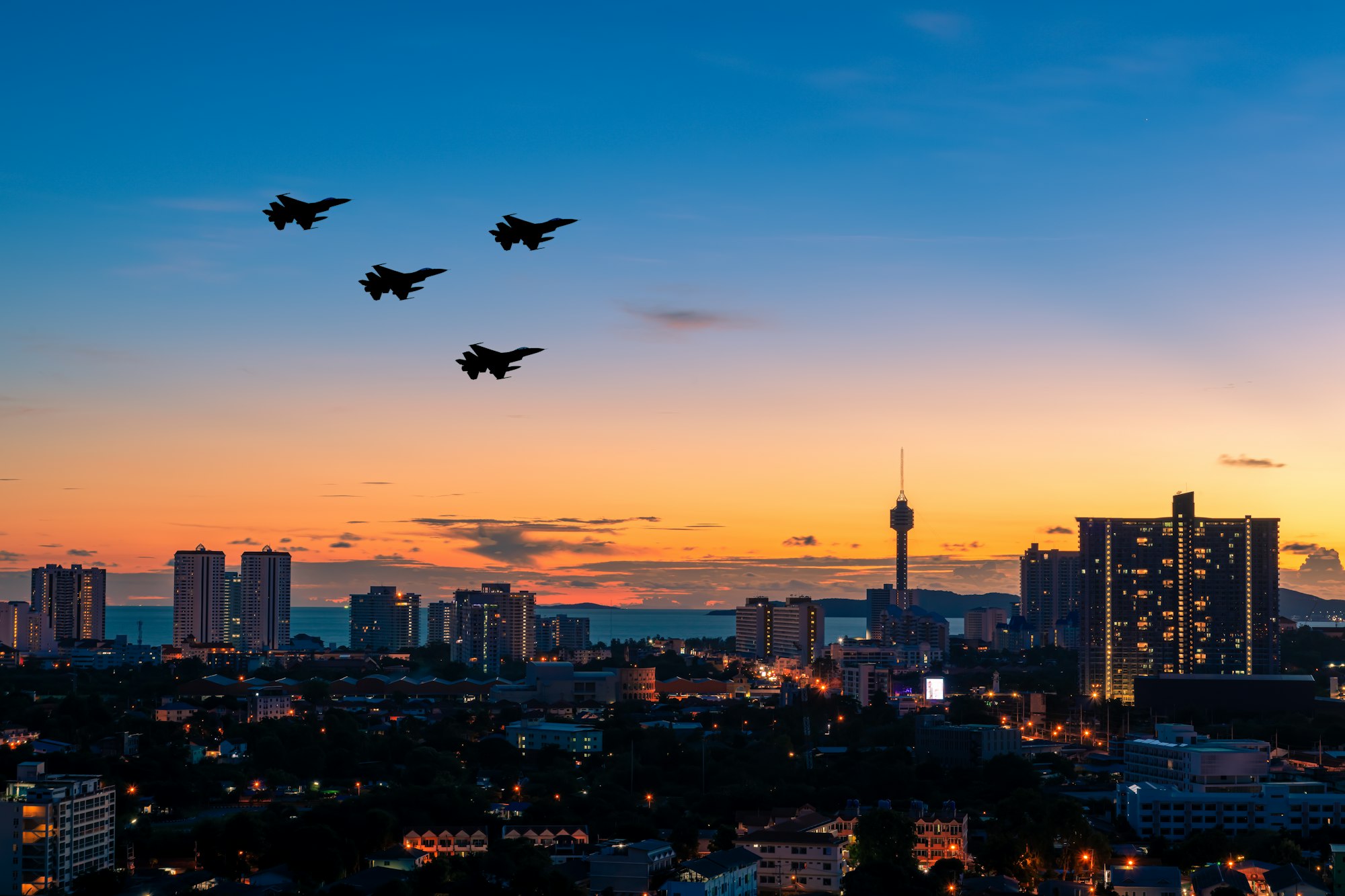Key Details of the Event
What Happened
The US military has completed a first-of-its-kind dogfight between an AI-driven F-16 jet and a human-piloted F-16. This test occurred at Edwards Air Force Base in California, highlighting a significant step forward in combining artificial intelligence with aerial combat tactics.

Performance Comparison
The AI-controlled jet, referred to as the X-62A VISTA (Variable Stability In-flight Simulator Test Aircraft), competed against a human in various combat exercises. These exercises tested offensive and defensive maneuvers and close-range combat skills at speeds up to 1,200 miles per hour.
Technological Developments and AI Use
About the X-62A VISTA
This particular F-16 variant is designed to fly autonomously using a specialized AI system that was specifically developed to undertake combat actions independently. Up to this event, the VISTA has been flown in over 21 test sessions, accumulating more than 17 hours of flight time which were crucial for improving the AI’s tactical decision-making abilities.
AI’s Role in Combat
The AI onboard the VISTA processes live situational data to make immediate decisions during flight, closely simulating a human pilot’s reasoning and instincts. This functionality is at the heart of machine learning technology, which allows the AI to execute highly complex maneuvers and adapt to new combat scenarios efficiently.
Safety and Ethical Measures
Safety Protocols Used
The AI jet incorporates advanced safety protocols that prevent collisions and prioritize human safety. These features are essential for permitting the AI to undertake more bold and risky maneuvers during testing.
Challenges Faced
Adopting AI into military strategy is fraught with regulatory and moral obstacles, mainly concerning the reliability and ethical deployment of autonomous systems in combat. These tests indicate a gradual acceptance and integration of AI technologies within military protocols, reflecting an evolution in both policy and technological trust.
Future Directions and Strategic Implications
Potential Changes to Aerial Combat
AI integration marks a pivotal change in military capabilities, suggesting that future air combat will rely more on speed, accuracy, and adaptability, with AI at the forefront. This shift could redefine combat strategies and operational efficiencies.
Progress in Military AI
As AI technology advances, its application in military operations is expected to expand, possibly taking over roles currently filled by humans. This transition would potentially enhance mission outcomes and reduce human risks.
This account discusses a landmark event where an AI-powered F-16 jet was pitted against a human pilot in a controlled combat scenario, reflecting significant progress in military AI applications.

Frequently Asked Questions (FAQ)
1. What is the X-62A VISTA?
The X-62A VISTA (Variable Stability In-flight Simulator Test Aircraft) is a modified F-16 jet equipped with artificial intelligence, enabling it to perform combat maneuvers autonomously. It has been developed to refine AI capabilities in real-world aerial combat scenarios, undergoing extensive testing to enhance its decision-making algorithms.
2. How does the AI in the X-62A VISTA make decisions?
The AI system installed in the X-62A VISTA utilizes machine learning to process real-time situational data and execute combat decisions. This system mimics human cognitive functions, allowing the aircraft to perform complex maneuvers and respond to combat scenarios with high efficiency and precision.
3. What were the objectives of this AI vs. human dogfight?
The primary objective was to evaluate the comparative effectiveness and maneuverability of AI-controlled jets against human pilots in various combat scenarios. This includes testing offensive and defensive tactics and within-visual-range engagements, aiming to assess the potential of AI to operate autonomously in high-stakes military operations.
4. What safety measures are in place for tests involving AI-controlled jets?
Safety is a paramount concern in tests involving AI-controlled jets like the X-62A VISTA. The aircraft is equipped with advanced collision-avoidance systems, strict compliance protocols, and is closely monitored during all test flights to prevent any risks to human life and to maintain control over the AI’s operational limits.
5. What are the future implications of integrating AI into military aviation?
The successful integration of AI into military aviation could transform aerial combat strategies, emphasizing the use of speed, precision, and adaptability. Future implications include reducing the roles of human pilots in direct combat, minimizing human casualties in military operations, and enhancing the effectiveness of aerial missions through faster, more accurate decision-making and execution by AI-powered aircraft.
These FAQs aim to clarify the significance and technical aspects of the recent US military test involving an AI-controlled F-16 jet and a human pilot.
Sources Telegraph


